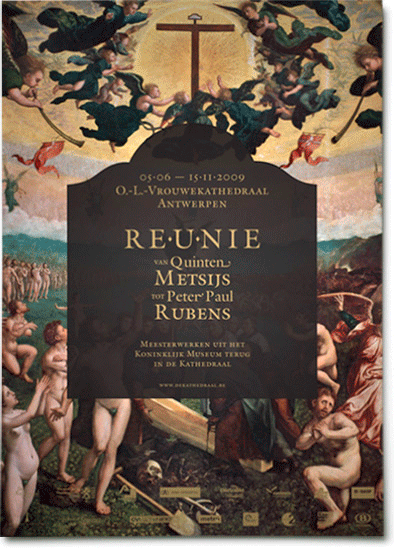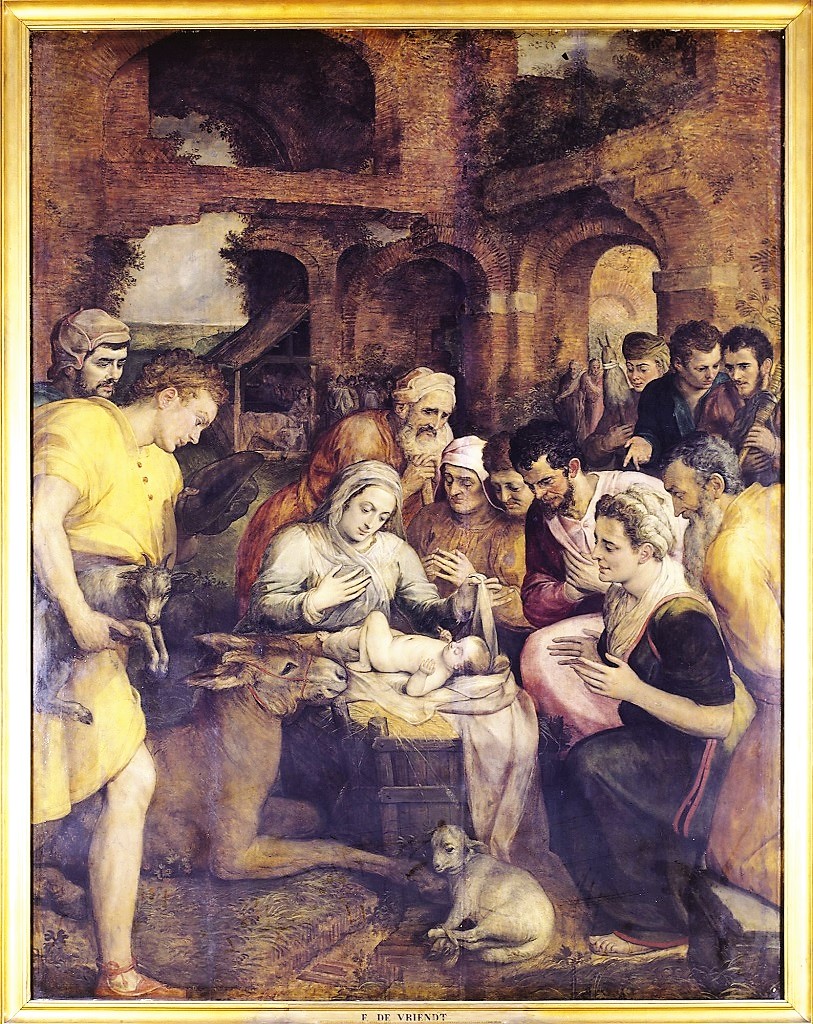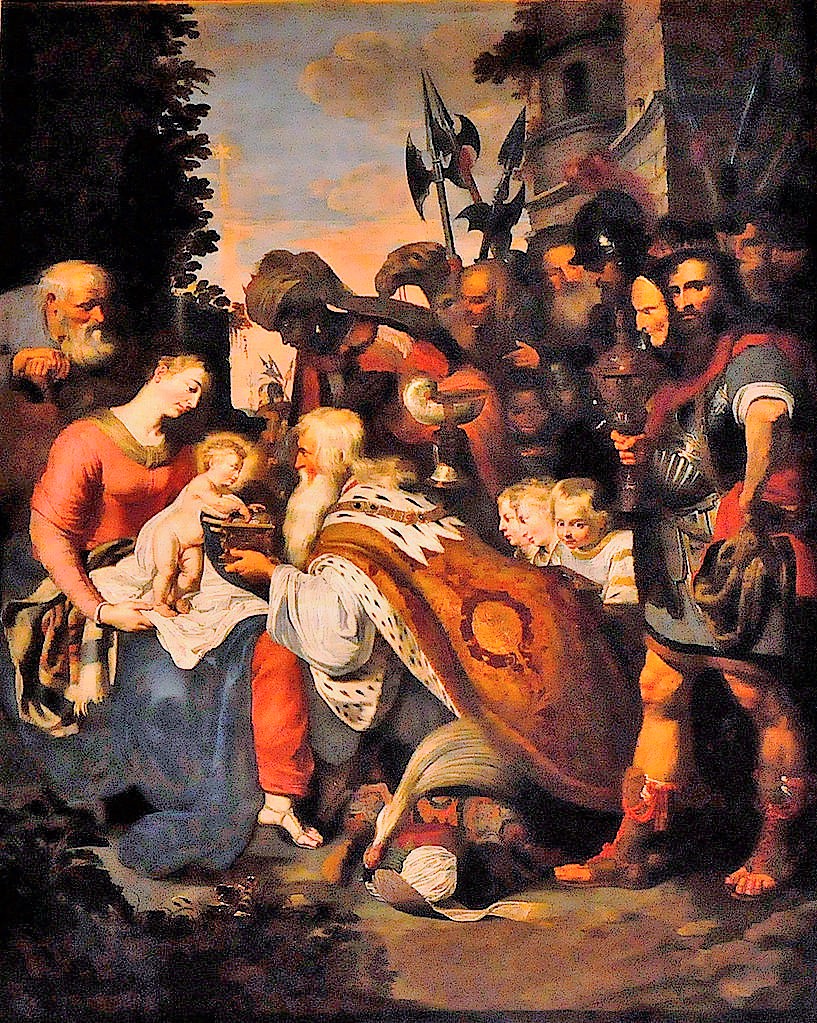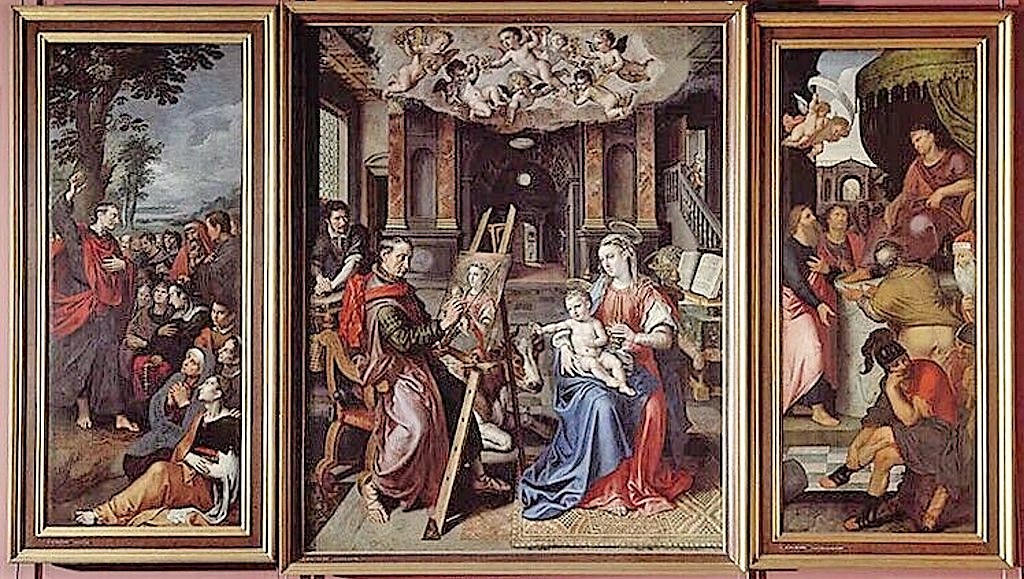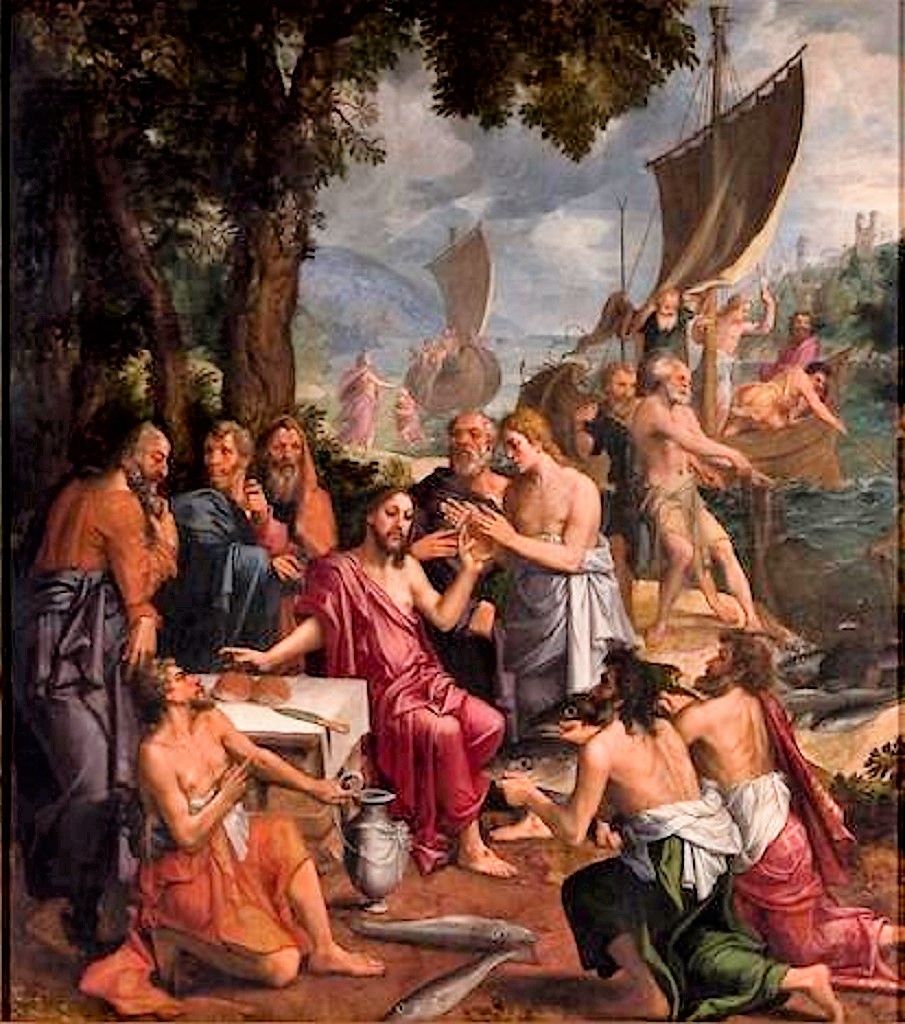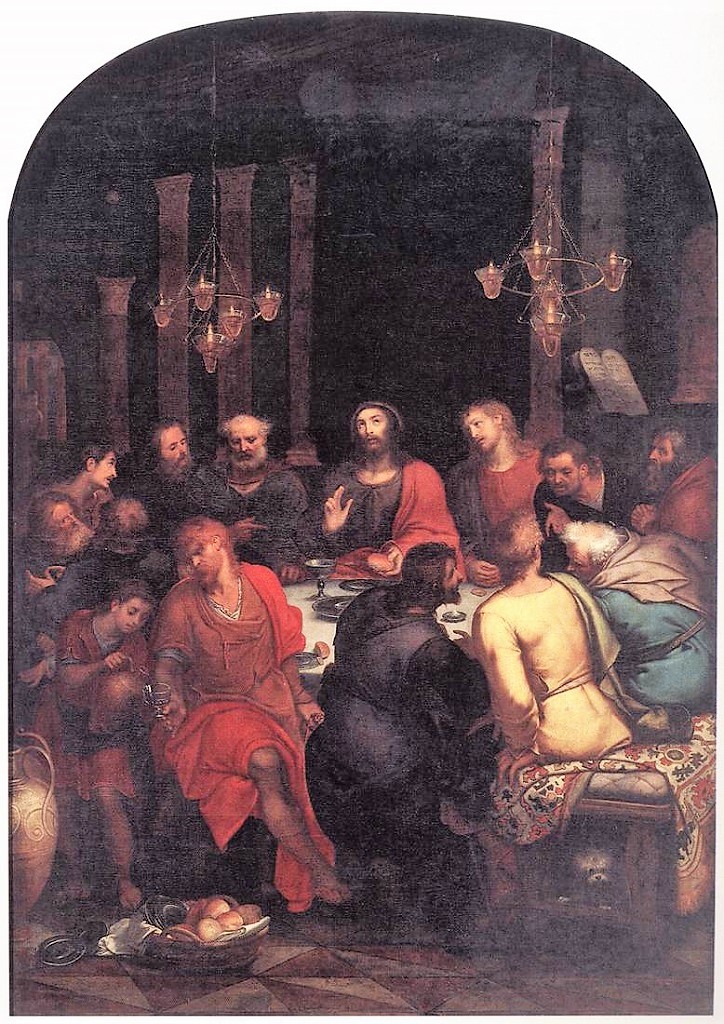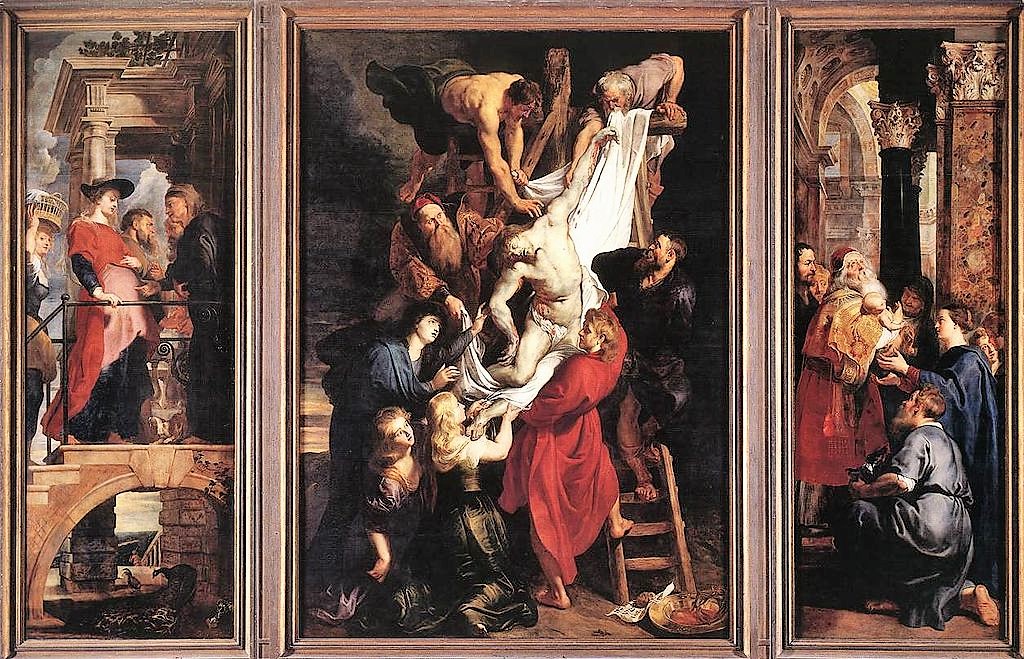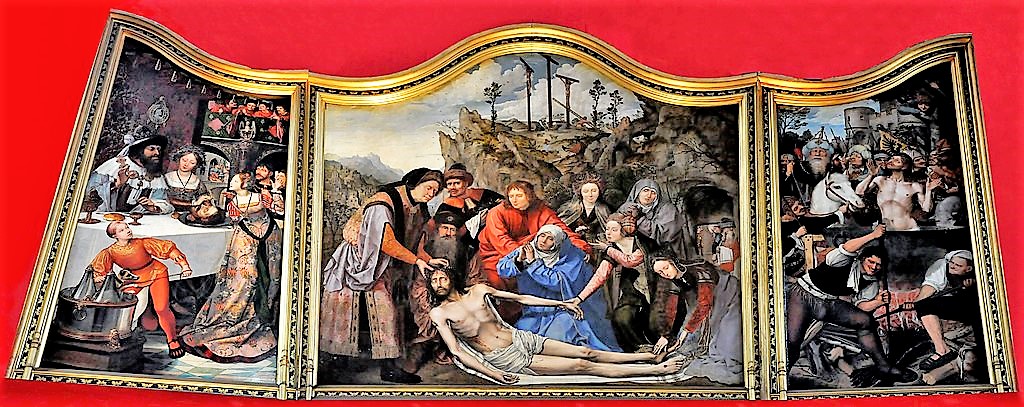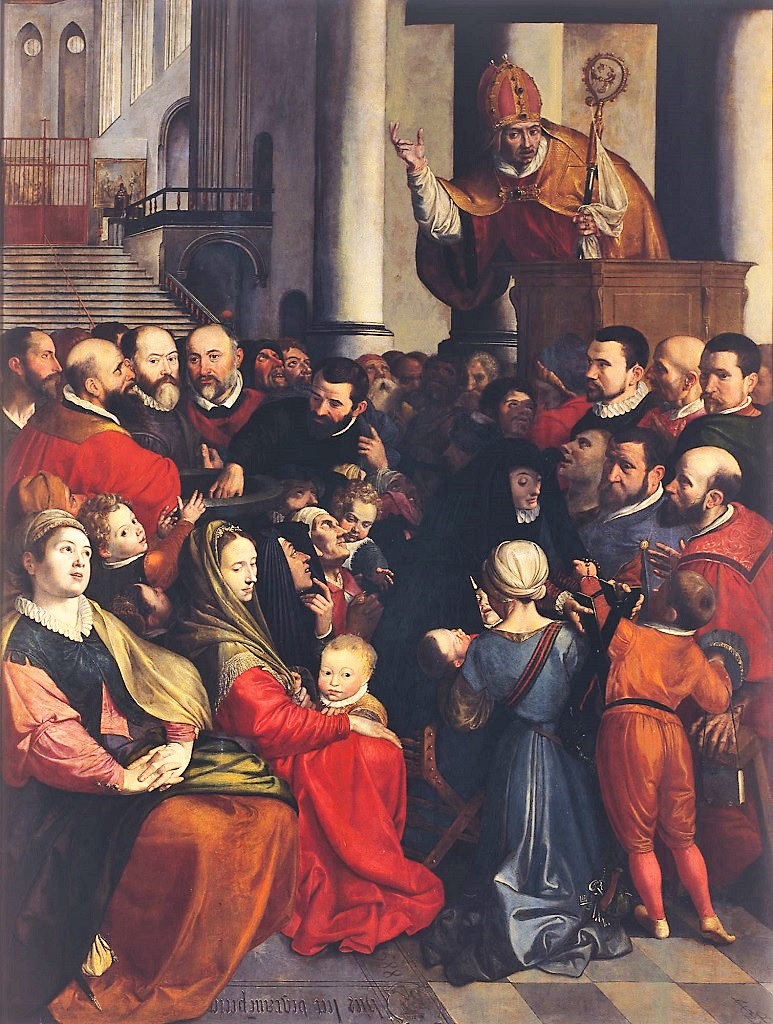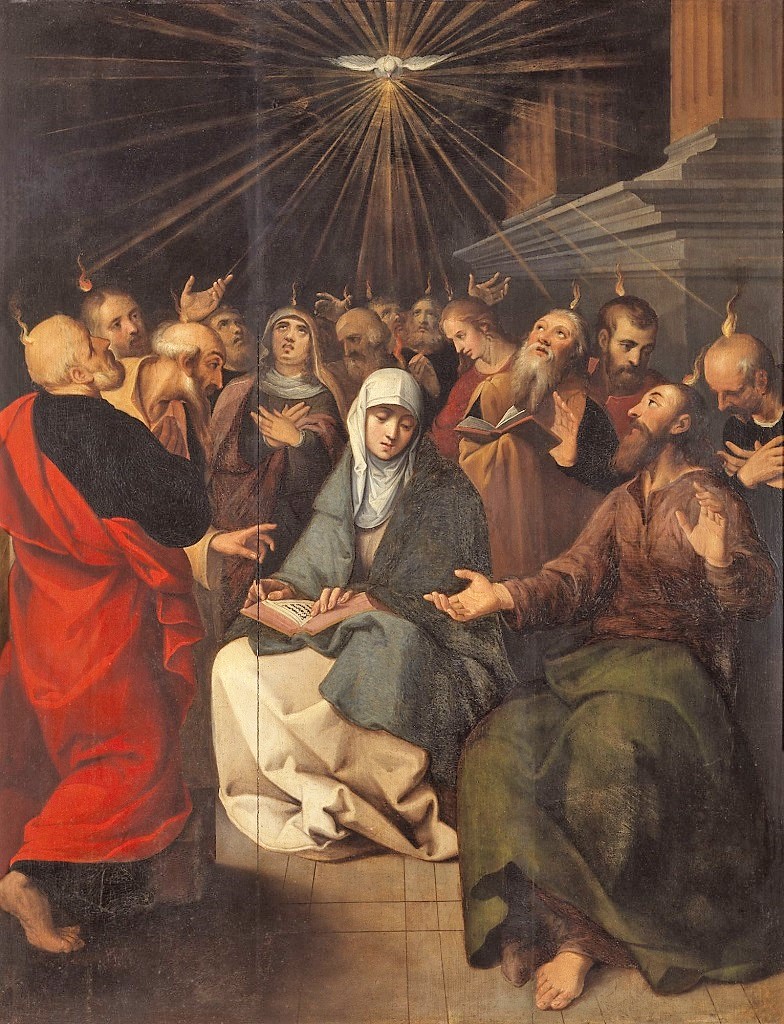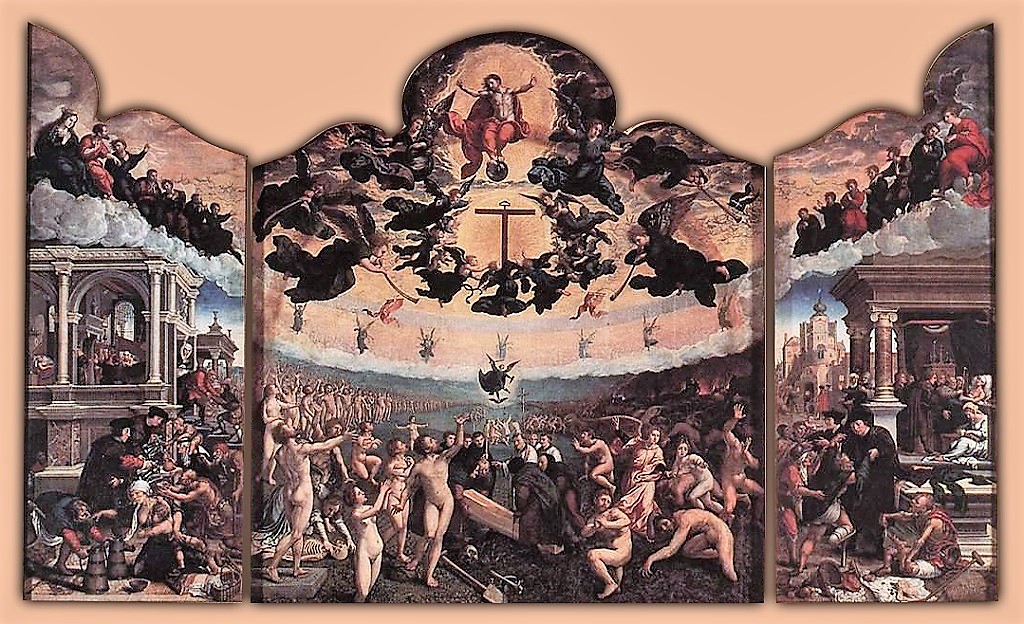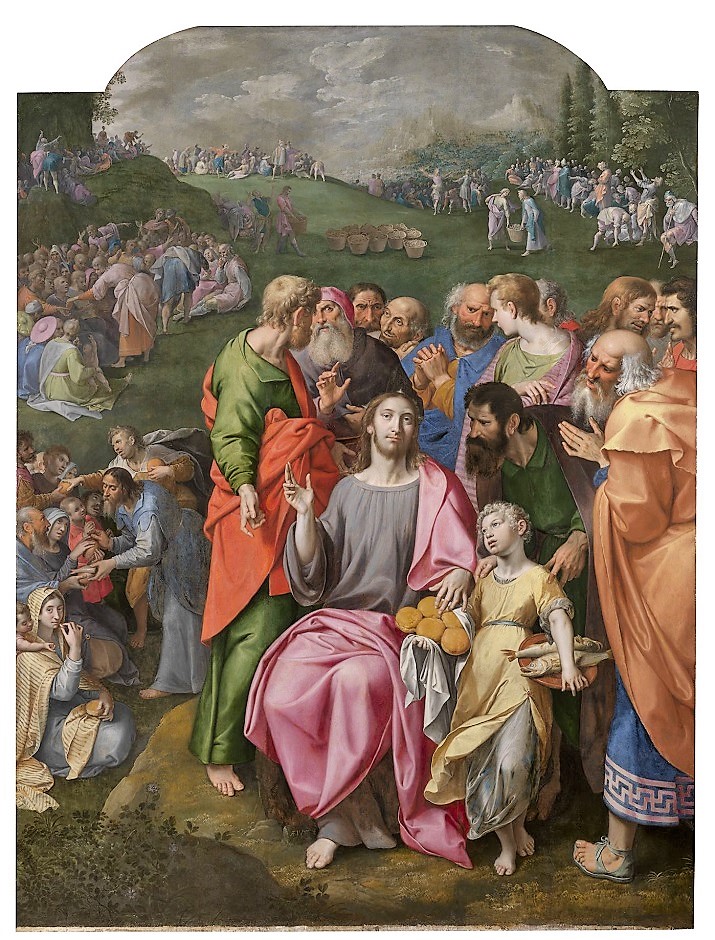Exhibitions - Archives
2009-2019 - RE.Ü.NION
From Quinten Metsijs to Peter Paul Rubens
Masterpieces from the Royal Museum back in the CathedralThe main church of a diocese, where the bishop’s seat is.
REUNION, a project of the Royal Museum of Fine Arts Antwerp (KMSKA) and the Antwerp Cathedral of Our Lady, was scheduled from June 5 to November 15, 2009. During that period, more than 175,000 Belgian and foreign visitors were counted, and their appreciation was great. Because as of 2011 the KMSKA would close for major renovations, this exhibition was finally extended until the end of October 2019.
Throughout that time, 8 altarpieces belonging to the KMSKA were mixed with 8 altarpieces from the Cathedral’s collection in the Cathedral of Our Lady, and installed “in situ” in such a way that the visitor, certainly from a distance, got the illusion that the numerous altars of guilds, craftsmen, city militias and brotherhoods were back home.
The choice of the exhibited works was based on a few criteria:
- All the works were once at an altarThe altar is the central piece of furniture used in the Eucharist. Originally, an altar used to be a sacrificial table. This fits in with the theological view that Jesus sacrificed himself, through his death on the cross, to redeem mankind, as symbolically depicted in the painting “The Adoration of the Lamb” by the Van Eyck brothers. In modern times the altar is often described as “the table of the Lord”. Here the altar refers to the table at which Jesus and his disciples were seated at the institution of the Eucharist during the Last Supper. Just as Jesus and his disciples did then, the priest and the faithful gather around this table with bread and wine. in the cathedral.
- All were once commissioned by members of civil society: guilds, crafts, city militias or brotherhoods.
- All were made by artists registered in Antwerp.
- The works from the KMSKA had to be able to withstand the move without problems.
The setting was chronological, not the chronology of the pieces themselves, but of their story. The centerpiece of the story is the Descent from the Cross of Christ, the masterpiece of Peter Paul Rubens. Starting from the northeast (back left) through the North aisleLengthwise the nave [in exceptional cases also the transept] of the church is divided into aisles. An aisle is the space between two series of pillars or between a series of pillars and the outer wall. Each aisle is divided into bays. and both transepts, the first section goes over a series of events that take place before the death of Christ. Then returning through the south aisle it goes over events from after his death.
If not otherwise mentioned, the images are in public domain and come from Wilipedia Commons.
John preaching in the Wood (ca. 1622)
Hendrik van Balen (Antwerpen 1575 – 1632)
Corporation of the Cabinet Makers
KMSKA/OLV Baroque
Dominique Provoost, CC BY-NC-ND 4.0, artinflanders
SaintThis is a title that the Church bestows on a deceased person who has lived a particularly righteous and faithful life. In the Roman Catholic and Orthodox Church, saints may be venerated (not worshipped). Several saints are also martyrs. Luke painting the Madonna (1602)
Maerten de Vos (Antwerpen 1532 – 1603)
Saint Luke Guild
KMSKA Renaissance
The Wonderful Fisching (ca. 1560)
Hans van Elburcht (Elburg ca. 1500 – Antwerpen 1571)
Corporation of the Fish Handlers
OLV Renaissance
Jesus among the Scribes (1587)
Frans I Francken (herentals 1542 – Antwerpen 1616)
Schoolmaster’s Guild and Corporation of the Soap Makers
OLV Mannerism
The Last Supper (1592)
Otto van Veen (Leiden 1556 – Brussel 1629)
Fraternity of the Blessed SacramentThe consecrated host, in which the presence of Jesus Christ is acknowledged. A synonym is ‘the Venerable’. In larger churches a chapel is dedicated to it, usually on the south side of the church.
OLV Mannerism
The Descent from yje Cross (na 1610)
Adam van Noort (Antwerpen 1561/62 – 1641)
Fraternity of the BlessedUsed of a person who has been beatified. Beatification precedes canonisation and means likewise that the Church recognises that this deceased person has lived a particularly righteous and faithful life. Like a saint, he/she may be venerated (not worshipped). Some beatified people are never canonised, usually because they have only a local significance. SacramentIn Christianity, this is a sacred act in which God comes to man. Sacraments mark important moments in human life. In the Catholic Church, there are seven sacraments: baptism, confession, Eucharist, confirmation, anointing of the sick, marriage and ordination.
OLV Baroque
Dominique Provoost, CC BY-NC-ND 4.0, artinflanders
The Descent of the Holy SpiritThe active power of God in people. It inspires people to make God present in the world. Jesus was ‘filled with the Holy Spirit’ and thus showed in his speech and actions what God is like. People who allow the Holy Spirit to work in them also speak and act like God and Jesus at those moments. See also ‘Pentecost’. (na 1600)
Atelier Francken
Commissioner unknown
OLV – Renaissance
Dominique Provoost, CC BY-NC-ND 4.0, artinflanders
Some time later an additional altar piece was added
At the end of 2021, beginning of 2022, the works present in the cathedral will be thematically rearranged.
